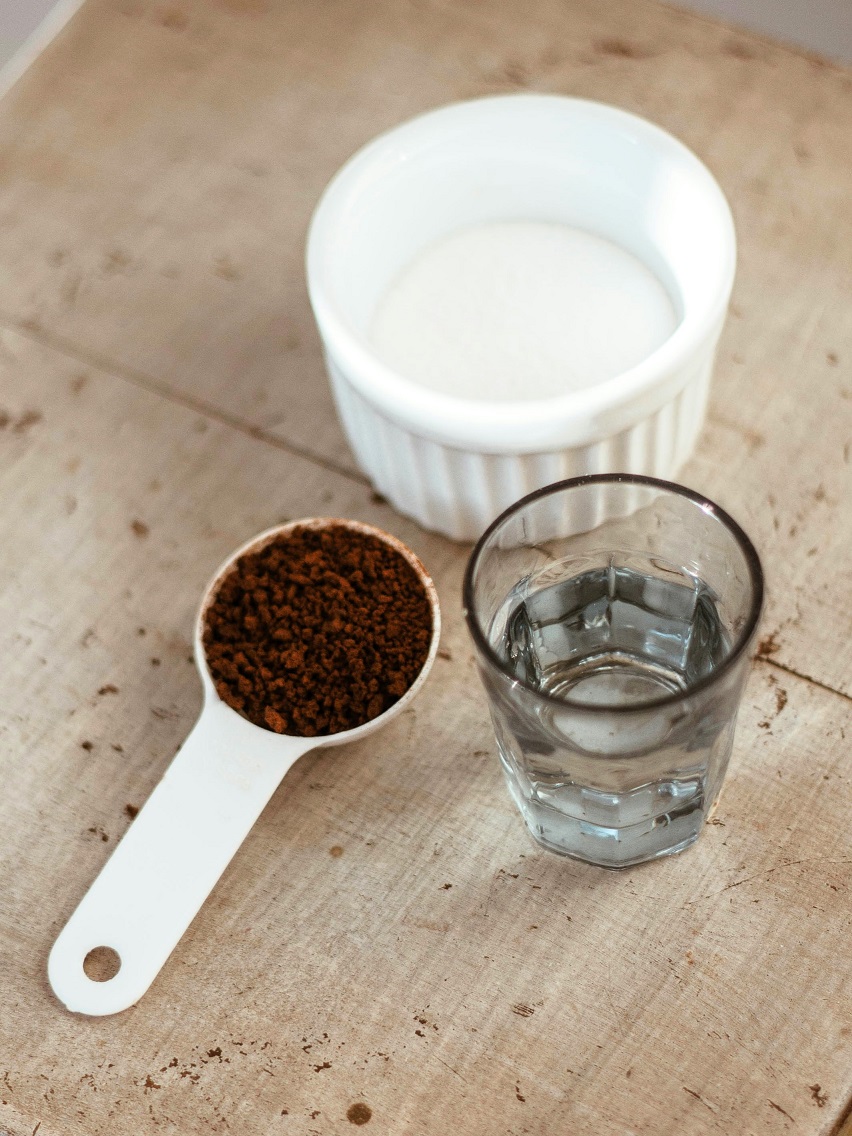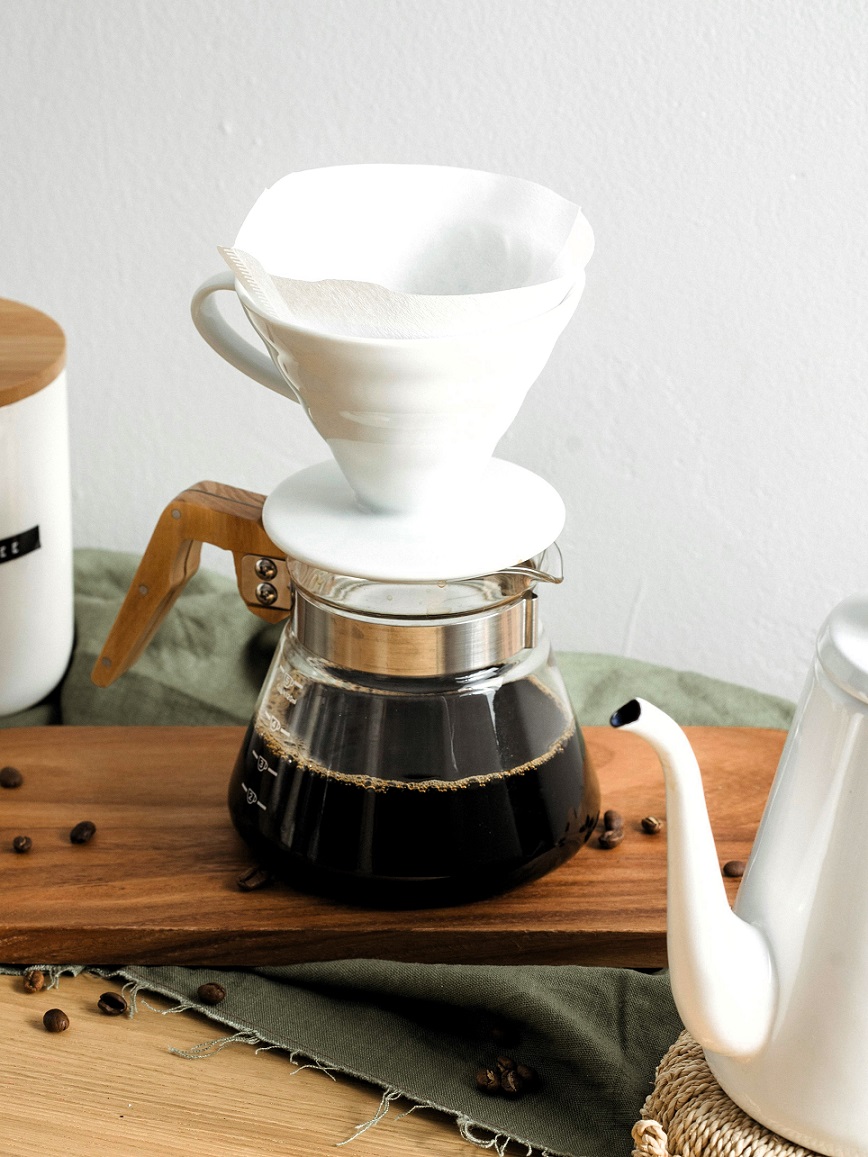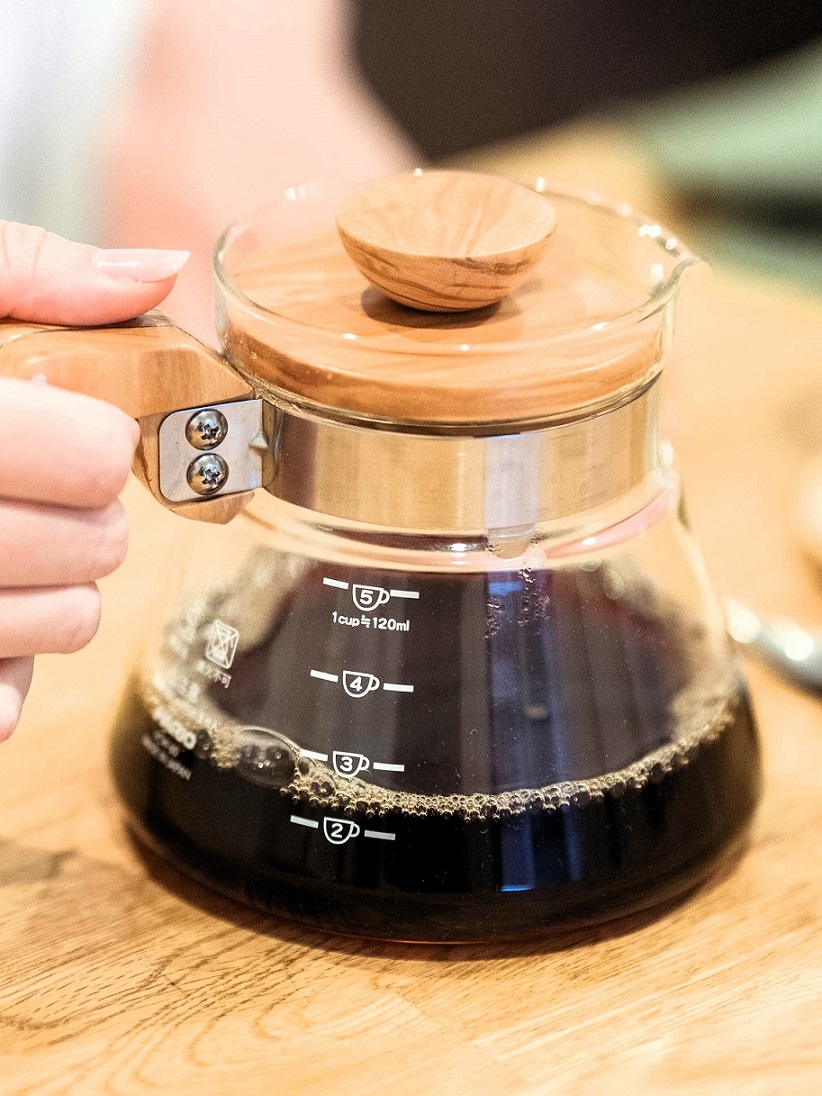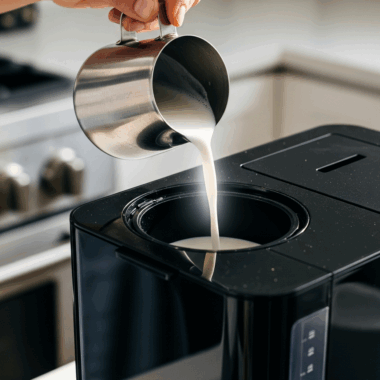Last Updated on June 12, 2025 by Karen
Learn how to make Cafézinho, Brazil’s traditional sweet and strong coffee. This simple recipe uses dark roast coffee, sugar, and a cloth filter for a bold brew served in a small cup.

If you love strong, sweet coffee and want to experience a unique piece of Brazilian culture, this traditional Brazilian coffee recipe—known as Cafézinho—is a must-try. Served in a small cup, Cafézinho is more than just a drink; it’s a daily ritual across Brazil. Whether you’re enjoying it with Brazilian friends, during a business meeting, or after dinner with dessert, this tiny yet bold beverage delivers big flavor with every sip.
Cafézinho is Brazil’s answer to espresso—sweet, strong, and deeply rooted in tradition. It’s also incredibly easy to make at home using just a few pantry staples. Whether you’re using a cloth filter, paper filter, or even a French press, this recipe gives you the classic flavor and warmth of a typical Brazilian coffee.
What Is Cafézinho?
In Portuguese, “Cafézinho” means “little coffee.” But don’t let the name fool you—this black coffee is big on taste. Typically brewed with dark roast coffee grounds, sweetened during the brewing process, and served hot in a small cup, Cafézinho is a staple of Brazilian hospitality. It’s the drink of choice when welcoming guests, sharing news, or simply enjoying a break from the day.
Unlike regular coffee, Cafézinho is brewed with sugar, giving it a smooth, rich taste with less bitterness. It has the espresso consistency without the need for an espresso machine and is considered the best way to experience Brazilian coffee at home.

Ingredients You’ll Need to Make Cafézinho
Coffee Beans
Use freshly ground, single-origin coffee beans if possible. A dark roast brings out the bold, bitter-sweet flavors Cafézinho is known for.
Ground Coffee
Grind the beans finely, similar to espresso grind. If you’re using pre-ground coffee, make sure it’s fresh and stored in an airtight container to preserve its complex flavors.
Sugar
Traditionally, white sugar is used and added directly to the water as it boils. This creates a smoother taste compared to sweetening afterward.
Hot Water
Use filtered hot water, brought just to a boil. Water temperature should be around 200°F (93°C) for optimal extraction.
Cloth Filter
The cloth coffee filter is the traditional Brazilian way to brew Cafézinho. It allows more oils to pass through than a paper filter, enhancing the body and flavor. Both work fine depending on what you have.

How to Make Traditional Brazilian Cafézinho
Step 1: Boil Water
In a small pot, bring your desired amount of water to a boil. For one serving, use about 4 ounces of water.
Step 2: Add Sugar
Once boiling, add about 1 tablespoon of sugar per serving to the water. Stir until fully dissolved.
Step 3: Add Coffee Grounds
Remove the pot from heat. Add about 1½ to 2 tablespoons of finely ground coffee directly to the hot sugar-water. Stir to combine.
Step 4: Let Steep
Cover the pot and let the coffee mixture steep for about 3–5 minutes. This helps draw out the rich coffee oils and flavor.
Step 5: Strain
Slowly pour the mixture through your cloth filter or paper filter, directly into a small cup or glass. Let it drip naturally—do not press.
Step 6: Serve and Enjoy
Serve hot. You can add a splash of milk, heavy cream, or enjoy it black. For something more indulgent, top with condensed milk for a sweet twist.

Tips for Making the Best Cafézinho
• Use freshly ground coffee – For the best flavor, grind your dark roast coffee beans just before brewing. A fine grind gives the traditional espresso consistency Cafézinho is known for.
• Measure the coffee-to-water ratio correctly – Use about 2 tablespoons of ground coffee per 4 ounces of hot water. This ensures a strong, bold brew.
• Add sugar before brewing – Sweeten the water before adding the coffee grounds. This method gives Cafézinho its signature smooth sweetness.
• Let the coffee steep, not boil – After adding coffee to the sugar-water mixture, remove from heat and let it sit for 3–5 minutes. This prevents bitterness and brings out complex flavors.
• Use a cloth filter for authenticity – A cloth coffee filter allows more oils to pass through, enhancing body and richness. If unavailable, use an unbleached paper filter.
• Serve in a small cup – Cafézinho is traditionally served in a small cup, keeping the portion strong and satisfying without being overwhelming.
• Enjoy immediately – For the freshest flavor, drink your Cafézinho as soon as it’s brewed. It’s not meant to sit or be reheated.
• Store ground coffee properly – Keep your coffee grounds or beans in an airtight container away from heat and moisture to preserve aroma and taste.
• Customize to your liking – Though it’s often served black and sweet, you can add a splash of milk, heavy cream, or even a spoonful of condensed milk for a richer taste.

Variations to Try
Brazilian Iced Coffee
Let Cafézinho cool, then serve over ice with a splash of milk for a refreshing Brazilian twist—perfect for summer evenings.
Brazilian Coffee Cocktail Recipe
Mix Cafézinho with simple syrup, condensed milk, and a shot of cachaça in a cocktail shaker. Serve over ice for a drink worthy of Brazil’s national cocktail status. If you like espresso martini, you’ll love this one!
Brazilian Cappuccino
Blend Cafézinho with frothed milk and a sprinkle of cocoa or cinnamon for a creamier, lighter coffee drink.

What to Serve With Cafézinho
Cafézinho is often enjoyed on its own, but it pairs beautifully with both sweet and savory Brazilian treats. Whether you’re serving it after dinner or during a casual chat with friends, these pairings bring out the best in your strong coffee.
• Brazilian Carrot Cake (Bolo de Cenoura)
This moist, rich cake topped with a chocolate glaze is a classic pairing. The cake’s subtle sweetness and smooth texture balance the boldness of black coffee.
• Pão de Queijo (Cheese Bread)
Soft and chewy on the inside with a slightly crisp exterior, this popular Brazilian snack is perfect for dipping or enjoying between sips of hot coffee.
• Brigadeiros
These chocolate fudge truffles made with condensed milk are a traditional Brazilian dessert and a sweet contrast to Cafézinho’s strong flavor.
• Bolo de Rolo (Rolled Cake)
Thin layers of sponge cake rolled with guava paste—delicate, fruity, and sweet. This treat complements the dark roast notes in the coffee.
• Tapioca Cookies or Coconut Biscuits
Light and crunchy, these cookies are ideal for dunking and offer a subtle sweetness that doesn’t overpower your cup.
• Simple Toast with Butter or Jam
For a more everyday option, enjoy Cafézinho with toasted bread topped with butter, guava jam, or cheese—simple, but classically Brazilian.
• Any Brazilian Dessert
From passion fruit mousse to coconut flan, Cafézinho complements just about any sweet treat you’d find on a typical Brazilian coffee table.
Is Cafézinho Healthy?
A basic Cafézinho without milk or cream has minimal calories—usually under 5 per serving. It’s suitable for those following a calorie diet, and when enjoyed in moderation, contributes antioxidants and a gentle energy boost. Avoid over-sweetening or adding too much dairy if you’re watching your daily values.

Cafézinho is a beautiful reflection of Brazilian culture—strong, sweet, warm, and full of connection. It’s quick to prepare, uses everyday ingredients, and can easily be customized to your taste. Whether you’re trying Cafézinho for the first time, introducing friends to a good cup of coffee, or adding it to your collection of hot drinks, this traditional recipe will never disappoint.
For anyone interested in exploring authentic global recipes, this traditional Brazilian coffee recipe is the perfect starting point.
Traditional Brazilian Coffee Recipe (Cafezinho)
Ingredients
- ½ cup filtered water
- 1 tbsp granulated sugar
- 1½ to 2 tbsps finely ground dark roast coffee espresso grind preferred
Instructions
- In a small saucepan, bring filtered water to a boil.
- Stir in sugar until completely dissolved.
- Remove from heat. Add 1½ to 2 tablespoons of finely ground coffee directly to the hot sugar-water. Stir to combine. Cover and let the mixture steep for 3–5 minutes to extract the rich flavor.
- Slowly pour through a cloth or paper coffee filter into a small cup. Let it drip naturally—no pressing.
- Serve immediately. Optionally, add a splash of milk, cream, or sweetened condensed milk for a richer variation.
















